iPhone 7 vs Galaxy S7: Which is best?
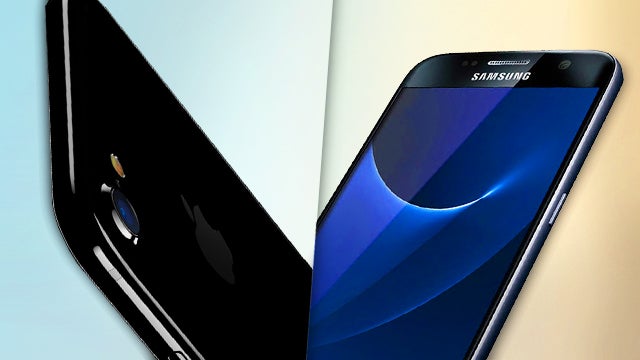
iPhone 7 vs Galaxy S7: Apple’s 2016 smartphone takes on the Samsung Galaxy flagship in the ultimate iOS vs Android face-off.
Earlier this year, Samsung lifted the lid on what many believe is already the phone of the year: the Galaxy S7. The handset is the result of years of refinement by Samsung, and is probably the best platform on which to showcase Android in all of its Marshmallow glory.
Related: iPhone 7 problems
But facing off against the Galaxy S7 is the iPhone 7, Apple’s new flagship for 2016 – which is an equally formidable handset. In true Apple style, the iPhone 7 offers a chic, minimalist design and seriously powerful hardware.
But which is the best pick? Does the Galaxy S7’s unbeatable spec-sheet make it the obvious choice? Or will the simplicity of Apple’s approach sway you? Let’s compare the two and see which should be your next phone.
WATCH: iPhone 7 review
iPhone 7 vs Galaxy S7 – Design
The Samsung Galaxy S7 is a supremely attractive handset, boasting a svelte 142 x 70 x 8mm chassis and a weight of just 152g.
The phone features a glass front and back, with the edges of the device framed in metal. This glass construction certainly looks attractive, but it’s fragile; it’s super-easy to crack the S7. We’ve used a number of S7 and S7 Edges over the past months and more than half of them have suffered with a cracked rear.
The Galaxy S7 is available in five colours: Black, White, Gold, Silver, and Pink Gold. Overall, it’s the most attractive Samsung smartphone to date.
Related: Best iPhone 7 Deals & Contracts
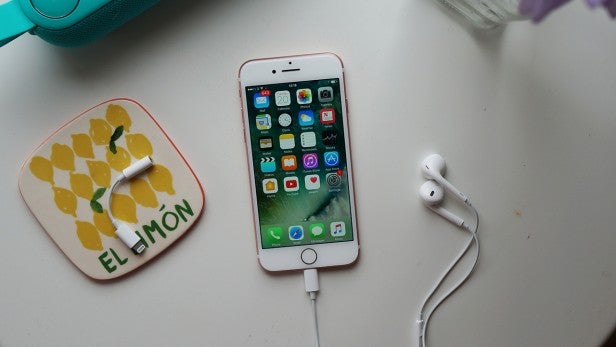
The iPhone 7 is also good-looking, and could be the most attractive Apple handset we’ve seen to date. However, the basic design is the same as that of the iPhone 6. If you’ve upgraded from one iPhone to the next then you’re probably looking for a device that offers a fresher design – and we wouldn’t blame you.
The iPhone 7 has a slim 7.1mm chassis, with antenna banding that’s far less prominent than it was on the iPhone 6S. The phone is lightweight at just 138g, and it’s a little smaller than the Galaxy S7 by virtue of its dinkier display.
For the first time ever, Apple is offering five colour options for its new smartphone: Gold, Silver, Rose Gold, Black, and Jet Black. All are matte, except for the glossy Jet Black.
If you’re after something a little different then we’d certainly opt for one of the two black models. We favour the matte black, simply because the Jet Black seems like an absolute scratch and fingerprint magnet.
WATCH: iPhone 7 vs Samsung Galaxy S7
Both the iPhone 7 and Galaxy S7 are resistant to water, but in slightly different ways. The iPhone 7 is IP67-rated, which means it can withstand rain – and even a shower. The Galaxy S7, meanwhile, is IP68-certified, which is slightly more dunkable. Neither is suitable for taking into the sea – so don’t even think about it.
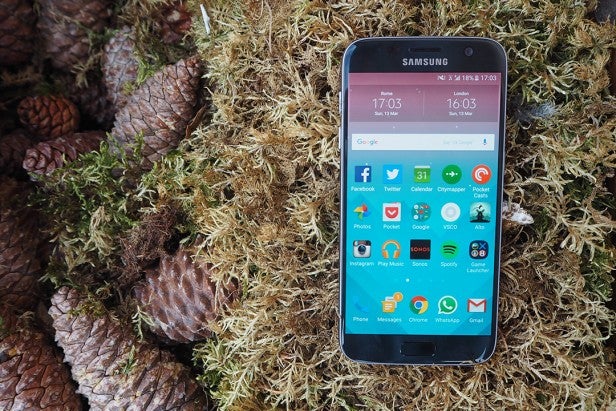
We reckon there’s a clear winner for design, then, and in our eyes it’s the Samsung Galaxy S7. Its bigger screen-to-body ratio appears to get you more display for the size, and its sleek glass design is simply gorgeous. The iPhone 7 is attractive, but the design doesn’t offer enough of a refresh over previous models.
Related: IP67 vs IP68: What’s the difference?
iPhone 7 vs Galaxy S7 – Display
As always, Samsung shines in the display department. The Galaxy S7 features a rich, colourful 5.1-inch Super AMOLED display that puts other Android phones to shame.
Better still, its high-resolution 1,440 x 2,560 pixel screen offers a ludicrous 577ppi pixel density. Also worth a mention is the fact that you’re getting a solid 72.1% screen-to-body ratio – bezels are kept to a minimum.
Another key feature of the Galaxy S7 screen is its protection. The display comes coated in Corning’s Gorilla Glass 4, which should help it to survive drops. That said, this reporter’s Galaxy S7 has already suffered cracked on a number of occasions, in spite of Corning’s best efforts.
Finally, Samsung offers an always-on display setting, which has so far only been seen on the LG G5 this year. Samsung turns on a small chunk of the display to show the time, date, and notifications at a cost of just over 1% battery life per hour. It’s a great feature that will keep you from constantly having to activate the display to check up on items.
Apple has once again kitted out the iPhone 7 with its trusty Retina HD display, which measures 4.7 inches from corner to corner. So while you’re getting a lower resolution of 1,334 x 750 pixels compared to the hi-res Galaxy S7 display, it’s spread over a smaller area, so the disparity won’t be as noticeable as it would be on a 5.1-inch screen.
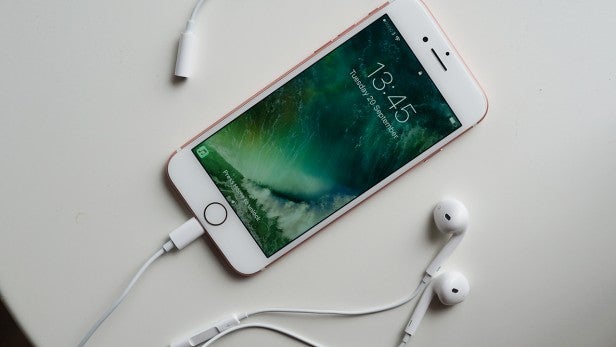
While the iPhone 7 hasn’t upped the resolution, it has seen improvement in other areas. The colour gamut has been widened to match the iPad Pro 9.7-inch and now hits the cinema standard. Apps need to be updated to make use of this, but the results are noticeable when viewing photos taken on the iPhone 7. They’re far more vivid and colourful, in comparison to the slightly dull results of the iPhone 6S.
Apple’s iPhone also benefits from 3D Touch, the pressure-sensitive layer first seen in the iPhone 6S. This lets you access content by pressing down hard on the display – as opposed to pressing for longer – and it’s a nice, if hardly vital, feature. iOS 10 helps it a lot, but it still isn’t a feature we’d use everyday.
While the wider colour gamut is great, we simply can’t look beyond the Samsung Galaxy S7 in this section. The Super AMOLED panel is glorious, and still beats every other phone on the market – aside from the Samsung Galaxy Note 7; but that phone has a tendency to combust and it isn’t officially on sale in the UK.
Related: iPhone 7 vs Galaxy Note 7
iPhone 7 vs Galaxy S7 – Performance and audio
The Galaxy S7 launched with the top hardware available at the time. Six months on, and it pretty much remains the case; the Galaxy S7 will compete with the best of them.
Samsung’s flagship actually comes with two different processors, depending on where you buy it. In the UK (and other select regions), you get Samsung’s custom-built Exynos 8890 processor clocked at 2.3GHz. It has eight cores and features a Mali-T880 MP12 GPU. In the US (and other select regions), you get Qualcomm’s top-end Snapdragon 820 processor, with four cores and an Adreno 530 GPU. Both chips are considered top-of-the-range, so the Galaxy S7 is very formidable in terms of computing power.
The Galaxy S7 also features 4GB of RAM, 32GB or 64GB of storage, and a microSD slot that supports cards up to 256GB.
Both the iPhone 7 and iPhone 7 Plus feature Apple’s new system-on-a-chip: the A10 Fusion. It’s a 64-bit, quad-core processor that Apple says is 40% faster than the A9, and twice as fast as the A8.
Two of the A10 Fusion’s cores are high-performance, and will handle the most demanding tasks. There are also two high-efficiency cores that run at a fifth of the power, which are used for more menial tasks. To manage this process, Apple has designed a new performance controller that decides which cores to use in a given situation.
Check out our benchmark comparisons below


Apple also says that the graphical performance of the A10 Fusion is 50% better than that of the A9, and three times as fast as the A8. That’s thanks to a six-core GPU that uses two-thirds of the A9’s power and a half of the A8’s power. Apparently, the A10 Fusion is 240 times faster than the original iPhone chip. The iPhone 7 also has 2GB of RAM, which is the same as before.
While the specs are on Samsung’s side, the iPhone 7 is feels snappier in use – as we were expecting.
Simply put, the iPhone 7 is a speed demon. It handles all tasks with ease, and we’ve not yet encountered any lag in our time with the phone. In fact, there isn’t really anything you can do with the phone that fully takes advantage of the speed on offer. For the moment, at least, it seems like overkill – and when apps finally appear to actually make use of all that speed, it’s likely the iPhone 8 will be out.
We were impressed with the new stereo speakers on the iPhone 7, and it’s one of the few areas where the Galaxy S7 can’t keep up. The mediocre single speaker on Samsung’s phone is poor, but it does have a headphone jack; something that’s lacking in the iPhone 7.
iPhone 7 vs Galaxy S7 – Software
The Samsung Galaxy S7 runs on Google’s Android software, specifically Android 6.0.1 Marshmallow. It was the most recent version, until Google announced Android 7.0 Nougat earlier this year. So until the S7 updates to Nougat, Marshmallow remains at the helms for now.
Marshmallow was a fairly incremental update, adding small improvements such as UX redesigns and battery life optimisations. The previous Android 5.0 Lollipop update laid most of the groundwork, so Marshmallow was more of a cherry on the top. That means it’s very slick and refined.
But don’t expect the Samsung Galaxy S7 to look like a Nexus 6P, or one of the upcoming Pixel phones. Samsung’s skin that covers Android is still very noticeable – and it’s a little like Marmite. There are some nice additions – such as the split screen, a more feature-rich Do Not Disturb mode, and plenty of themes from which to choose – but we still prefer the slick, simple approach of vanilla Android.
The iPhone 7, by comparison, runs on Apple’s custom-built iOS 10 software. The software is actually debuting on the handset, so the iPhone 7 has the advantage of having been designed entirely around running iOS 10.
Related: iOS 10 problems
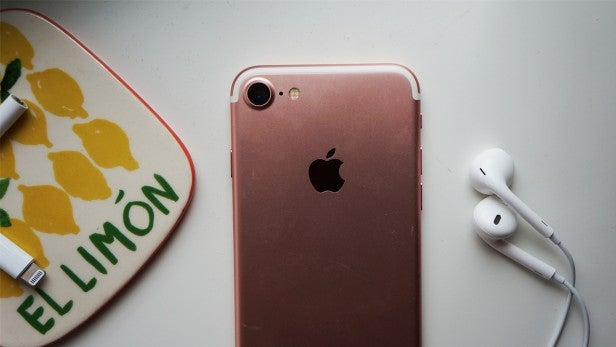
iOS 10 is the tenth major release of the OS. It improves user experience by opening up 3D Touch support to developers, and also offers a redesigned lockscreen and support for widgets. Also included is a Maps redesign, a Home app for smart home functionality, and third-party app compatibility for Siri.
There was a time when iOS outpaced Android in terms of design, but Android is now as slick as any of its rivals. There was also a time when iOS was a locked-down mess that stopped you from getting any serious work done, but that’s changed somewhat too, with more software functionality available to developers.
Overall, we’d still argue that Android is better for power users, and that iOS is your pick-up-and-go alternative. At the end of the day, this comes down to personal preference. If you’re signed up to a shed-load of Google services, you’ll probably want to stick with Android. If you’ve spent £500 on iTunes apps then maybe it’s worth sticking with the Apple ecosystem.
iOS 10 is also great if you’re the owner of lots of Apple gear. You can start a message on your iPhone and pick it up on your MacBook Pro, or AirPlay a YouTube video straight to your Apple TV. Apple Pay is great too, but then so is Android Pay.
There’s no clear winner here; it’s all down to personal preference. But both OSes are now at a point where they’re powerful in different ways. You’ll be happy, whichever way you go.
Related: iOS 10 vs Android Nougat
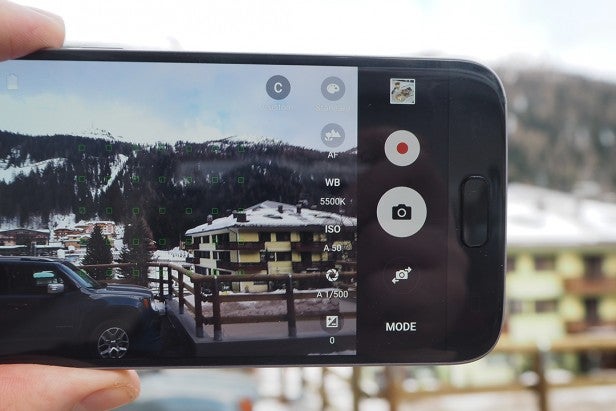
iPhone 7 vs Galaxy S7 – Camera
With every passing year, Samsung manages to impress yet further with its camera. Prior to the iPhone 7 launch, the Galaxy S7 boasted the best snapper on the market – and after using the iPhone, we’d say it still does.
The Galaxy S7 boasts a 12-megapixel camera with a wide f/1.7 aperture and extras such as LED flash, phase-detection autofocus and optical image stabilisation. It also has a 5-megapixel front-facing camera with a f/1.7 aperture and auto-HDR mode.
What really sets that Galaxy S7 camera apart is the built-in Dual Pixel technology. Every pixel on the Galaxy S7’s image sensor has two photodiodes instead of one. The main advantage of this increased pixel count is faster focus. When you’re taking a photo with an iPhone 6S, between 5% and 10% of the pixels are used for focusing. With the Galaxy S7, however, every single pixel is in play.
Related: iPhone Upgrade Program UK – will it save you money?
The iPhone 7, too, has a formidable 12-megapixel camera. It has an improved six-element lens and a wider f/1.8 aperture, improved from f/2.2 on the iPhone 6S and almost matching the Galaxy S7. There’s also a new Quad LED flash that’s 50% brighter than the old one.
Both phone cameras are great, and a pleasure to shoot with. It’s a close-call as to which is better, and it varies depending on the shot you’re trying to take and the position in which you’re shooting. Sometimes the shot comes out better on the iPhone; at other times it’s on the Galaxy S7.
The Galaxy S7 appears to be the more reliable of the two, with the iPhone 7 often getting dynamic range mixed up when shooting lots of pictures in a row. The slightly wider aperture on Samsung’s handset also provides slightly better depth of field – but again, it’s close.
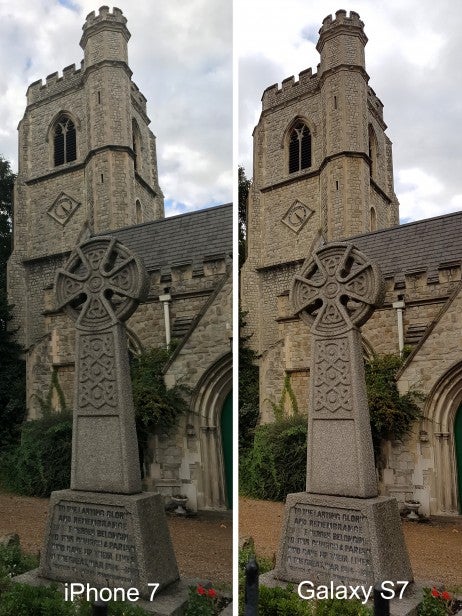 The iPhone 7 treats the sky better, but the Galaxy impresses with greater contrast and detail
The iPhone 7 treats the sky better, but the Galaxy impresses with greater contrast and detail
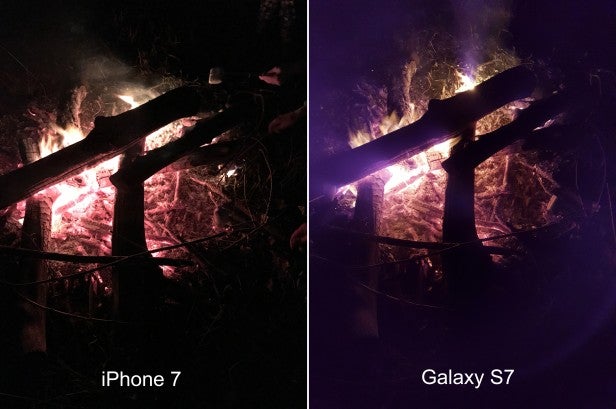 The iPhone comes out on top is this picture, with some odd colouring appearing in the Samsung effort
The iPhone comes out on top is this picture, with some odd colouring appearing in the Samsung effort
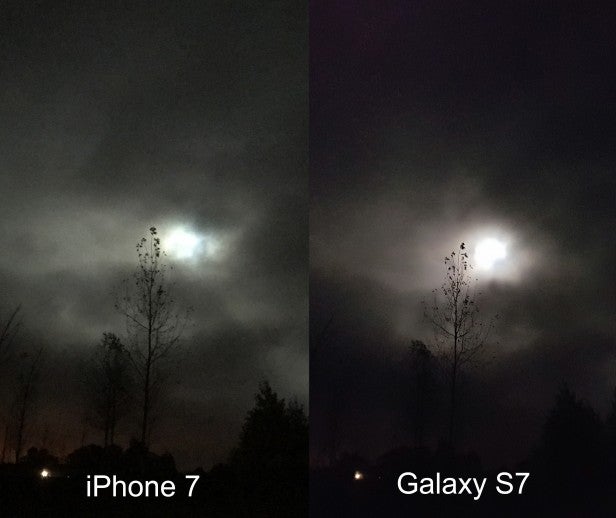 The iPhone 7 does slightly better in tricky and low-light conditions
The iPhone 7 does slightly better in tricky and low-light conditions
Both shoot smooth 4K video and silky slow-mo, while shooting and focusing in fast either way.
In terms of front-facing cameras, again they’re pretty neck-and-neck. The iPhone’s 7-megapixel camera captures slightly more detail than the S7’s 5-megapixel version, but the latter’s wider lens will cram in more faces. Personally, we’d take the wide-angle version.
iPhone 7 vs Galaxy S7 – Battery Life
This one is easy; the Samsung Galaxy S7 trounces the iPhone 7 when it comes to battery life.
The Samsung Galaxy S7 features a non-removable lithium-ion battery, with a cell capacity of 3,000mAh. That results in a talk-time of 22 hours, with 62 hours of music playback.
The iPhone 7 also features a non-removable battery, which Apple claims should last 2 hours longer than the outgoing iPhone 6S.
Related: Best Samsung S7 deals
WATCH: iPhone 7 vs iPhone 7 Plus – What’s the difference?
While the Samsung Galaxy S7 can easily make it through the day, the iPhone 7 is completely out of juice come the evening; that extra 2 hours is nowhere to be seen. To be fair, the iPhone 6S’s stamina was disappointing, but with the Android competition improving in 2016, the iPhone 7 lags even further behind.
We managed to completely drain the iPhone 7 in around 6 hours – with a mixture of gaming and video streaming – while the S7 lasted around 8 hours.
The Samsung Galaxy S7 recharges much faster than the iPhone 7, thanks to the inclusion of a quick-charge feature. The S7 goes from 0-100% in about 1hr 15mins; with the iPhone 7, it’s closer to 1hr 30mins. The Samsung Galaxy S7 also supports wireless charging – again, something missing from the iPhone.
The poor battery life on the iPhone 7 is the single biggest reason we find it hard to recommend, so that’s another round in the bag for the Samsung Galaxy S7.
iPhone 7 vs Galaxy S7 – Price and Release Date
On Amazon, the price of the Samsung Galaxy S7 ranges between £475 and £519, depending on the colour you opt for. It’s been available to buy since 11 March 2016.
The iPhone 7 is available now, with prices starting at £599, rising to £699 for the 128GB model and £799 for the 256GB model.
The Galaxy S7 is therefore significantly cheaper than the iPhone 7, even when you consider the Samsung flagship’s £569 launch price.
iPhone 7 vs Galaxy S7 – Verdict
To be honest, we weren’t expecting the Samsung Galaxy S7 to win this battle quite so comfortably. But the truth is that Samsung has pushed on very well this year, with Apple’s minor changes failing to keep up.
Don’t get us wrong, we’re happy to see the iPhone 7 become water-resistant and it remains an attractive handset, but it just can’t keep up elsewhere.
The Samsung Galaxy S7 has a better screen, a camera that’s on par with the iPhone, and a build that in our opinion is just more exciting. It doesn’t quite have the booming stereo speakers, but it does have a headphone jack.
Of course, if you’re a die-hard iOS fan then the simplicity of Apple’s ecosystem will probably still sway you in its favour.
Related: iPhone 8
Thanks to Three and Carphone Warehouse for their help with this article
Which is your favourite: the iPhone 7 or the Galaxy S7? Let us know your top choice and why on Twitter @TrustedReviews.


